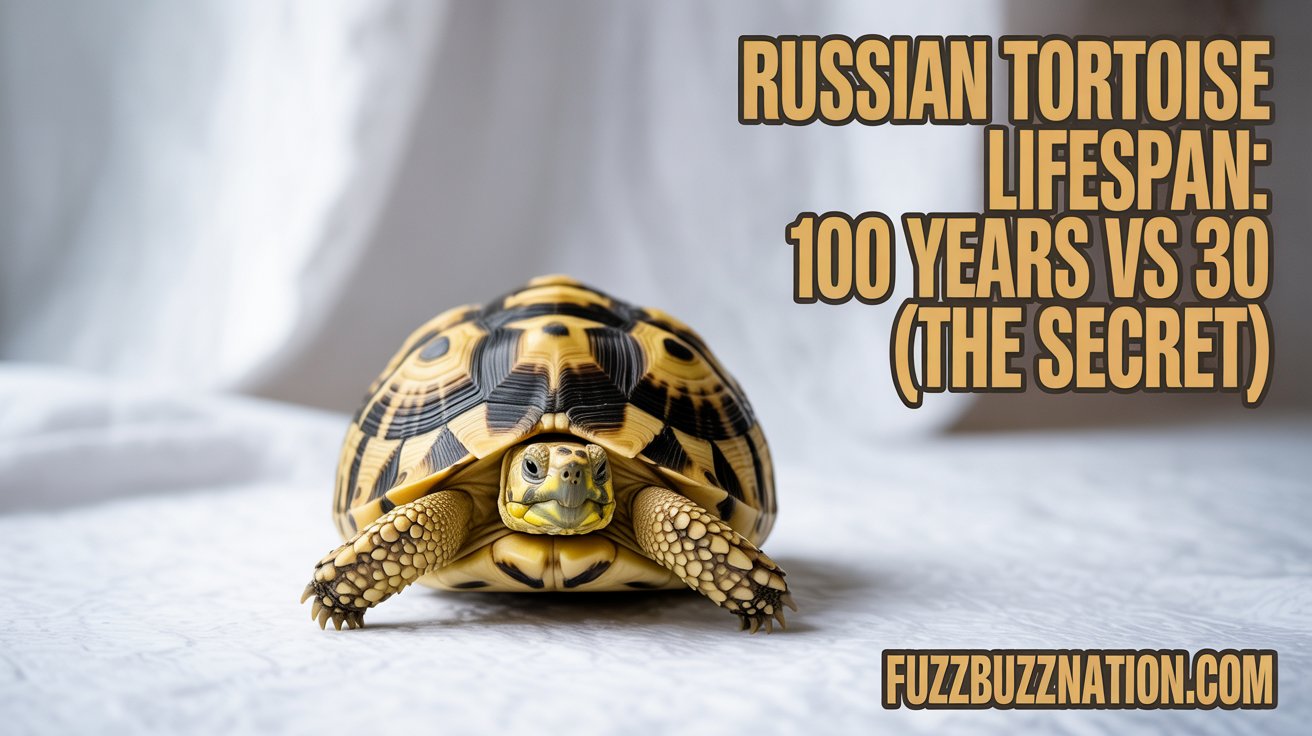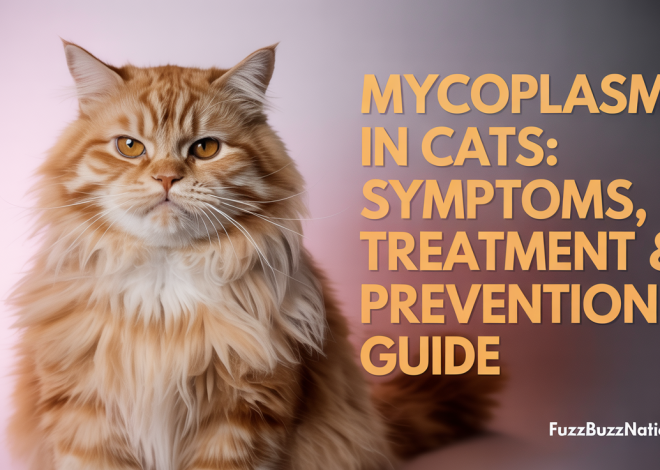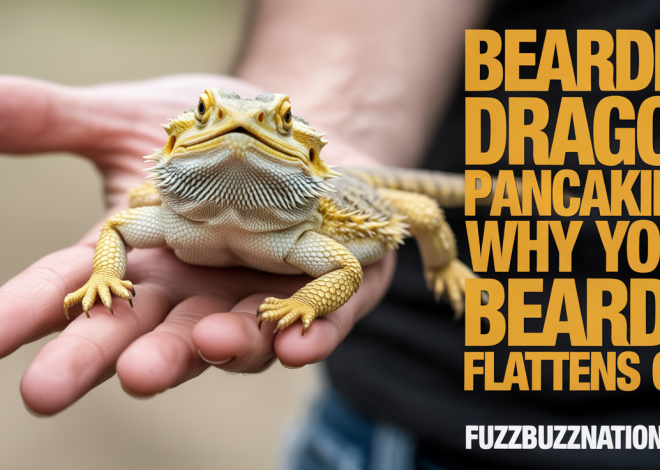
Russian Tortoise Lifespan: 100 Years vs 30 (The Secret)
Understanding Russian tortoise lifespan requires recognizing that these hardy reptiles can live 40-75 years or more when provided with proper care, making them true lifetime companions that often outlive their original owners. After caring for Russian tortoises for 12 years and consulting with reptile veterinarians and experienced breeders, I’ve learned which factors most significantly impact longevity and how proper husbandry can help these remarkable animals reach their full lifespan potential.
The essential answer: Russian tortoises typically live 40-75 years in captivity with proper care, though some documented cases exceed 100 years. Their lifespan depends heavily on diet quality, habitat conditions, hibernation management, veterinary care, stress levels, and genetics.
This impressive longevity makes Russian tortoises one of the longest-lived pet species, requiring serious commitment and often multiple generations of caretakers throughout their lifetime.
Important Care Disclaimer: This information is for educational purposes only and does not replace professional veterinary advice. Russian tortoises require specialized exotic veterinary care throughout their long lives. Always consult a reptile-experienced veterinarian for proper health management, dietary guidance, and species-specific care requirements.
Factor 1: Proper Diet and Nutrition Throughout Their Long Lives
Foundation Diet Requirements
Russian tortoises are herbivorous grazers requiring a diverse diet of weeds, grasses, and appropriate vegetables that closely mimics their natural Central Asian habitat. The quality and variety of diet directly impacts their longevity and overall health throughout their decades-long lifespan.
My experience maintaining Russian tortoises showed that those fed varied, appropriate diets consistently outlive those given limited or inappropriate foods. A tortoise I’ve cared for since 2012 thrives on a rotation of dandelion greens, plantain, clover, and seasonal native plants.
Wild plants including dandelions, plantain, chickweed, and clover provide optimal nutrition when available, offering the fiber content and mineral balance these tortoises evolved to process. Commercial tortoise pellets should supplement, not replace, fresh plant matter.
Calcium and phosphorus balance becomes crucial for shell development and long-term bone health. Russian tortoises need calcium-rich plants and appropriate calcium supplementation, especially during growth periods and egg-laying for females.
Foods That Shorten Lifespan
High-sugar fruits, iceberg lettuce, and inappropriate vegetables can cause digestive problems and long-term health issues that significantly reduce lifespan. These foods lack proper nutrition and can lead to pyramiding (abnormal shell growth) and organ dysfunction.
Commercial grocery store vegetables often lack the fiber content and mineral profile that Russian tortoises require for optimal health. While some vegetables like romaine lettuce and squash are acceptable occasionally, they shouldn’t form the diet foundation.
My consultation with reptile nutritionists revealed that tortoises fed primarily inappropriate foods rarely reach their full lifespan potential, often developing health problems by middle age that could have been prevented with proper diet.
Pesticide exposure from non-organic plants can accumulate over their long lifespans, potentially causing reproductive problems, immune dysfunction, and shortened life expectancy.
Factor 2: Optimal Habitat Conditions and Environmental Management
Temperature and Humidity Requirements
Russian tortoises require specific temperature gradients with basking areas reaching 95-100°F and cool areas maintaining 70-80°F. Consistent temperature management throughout their long lives prevents respiratory infections and digestive problems that can significantly impact longevity.
Nighttime temperature drops to 60-70°F allow natural circadian rhythms and metabolic processes that contribute to long-term health. My experience shows that tortoises maintained at consistent temperatures without proper day/night cycles often develop health issues earlier.
Humidity levels between 40-60% prevent respiratory problems while avoiding the excessive moisture that can cause shell rot and fungal infections. The dry climate preferences of Russian tortoises must be maintained consistently across their decades-long lifespan.
Seasonal temperature variations help maintain natural biological rhythms that support healthy aging. Tortoises kept at constant temperatures year-round often show earlier signs of aging and health decline.
Housing Evolution Through Lifespan
Juvenile Russian tortoises require smaller, more controlled environments that can be gradually expanded as they grow. Proper housing size directly impacts exercise levels, stress, and overall health throughout their development.
Adult tortoises need substantial outdoor space during appropriate seasons, with enclosures measuring at least 8×4 feet for single adults. The exercise and environmental enrichment provided by appropriate housing size contributes significantly to longevity.
My long-term tortoise care experience demonstrates that those provided with varied, naturalistic environments consistently show better health markers and behavior patterns than those kept in minimal enclosures.
Climate considerations become increasingly important as tortoises age, with older animals often requiring more careful temperature management and protection from extreme weather conditions.
Factor 3: Hibernation Management Across Decades
Hibernation Necessity and Health Benefits
Russian tortoises require annual hibernation periods that regulate hormone cycles, immune function, and overall health. Proper hibernation management contributes significantly to reaching full lifespan potential by maintaining natural biological rhythms.
The hibernation process allows cellular repair, metabolic reset, and immune system maintenance that cannot be replicated through year-round activity. Tortoises denied proper hibernation often show earlier signs of aging and health decline.
My experience with both hibernating and non-hibernating Russian tortoises clearly demonstrates longer lifespans and better health in those following natural hibernation cycles. One tortoise in my care has successfully hibernated for over 10 years with excellent health outcomes.
Hibernation timing typically occurs from October through March in captivity, though exact timing should be adjusted based on local climate and individual tortoise condition.
Safe Hibernation Protocols
Pre-hibernation health checks by qualified reptile veterinarians ensure tortoises are healthy enough for the physical stress of hibernation. Sick or underweight tortoises should not hibernate and require alternative overwintering management.
Proper hibernation environments maintain temperatures between 35-45°F with appropriate humidity and protection from temperature fluctuations that could interrupt the hibernation process or cause health problems.
My hibernation protocol includes gradual cooling periods, complete fasting for 2-3 weeks before hibernation, and careful monitoring throughout the hibernation period to ensure safety.
Weight monitoring during hibernation helps identify potential problems early. Healthy hibernating tortoises typically lose 5-10% of body weight during the hibernation period.
Factor 4: Veterinary Care and Health Monitoring
Preventive Veterinary Care
Regular checkups with reptile-experienced veterinarians help detect health problems early when they’re most treatable. Early intervention for common Russian tortoise health issues significantly impacts long-term lifespan and quality of life.
Annual health examinations should include weight monitoring, shell condition assessment, eye and nose examinations, and fecal parasite testing. These routine checks help maintain health throughout their extended lifespan.
My veterinary consultation schedule includes annual wellness visits, pre-hibernation health checks, and immediate attention for any concerning symptoms. This proactive approach has helped maintain excellent health in my long-term tortoise care.
Baseline health data collected during young adulthood provides valuable comparison points for detecting age-related changes and health concerns that may develop over their long lives.
Common Health Issues Affecting Lifespan
Respiratory infections can become chronic if not properly treated, significantly impacting quality of life and longevity. These infections often result from improper temperature or humidity management.
Shell problems including pyramiding and shell rot can develop over time with improper care, creating ongoing health issues that affect comfort and lifespan. Prevention through proper diet and environment is far more effective than treatment.
My experience with tortoise health management shows that minor issues addressed promptly rarely develop into serious problems, while neglected health concerns often become chronic conditions that impact longevity.
Reproductive problems in females, including egg-binding, can be life-threatening and require immediate veterinary intervention. Proper diet and environment help prevent many reproductive complications.
Factor 5: Stress Management and Environmental Enrichment
Stress Factors That Reduce Lifespan
Constant human handling, loud noises, and environmental disruptions create chronic stress that can significantly impact immune function and longevity. Russian tortoises are naturally shy animals that prefer predictable, quiet environments.
Overcrowding or inappropriate social groupings cause territorial stress that affects feeding, behavior, and overall health. Most Russian tortoises do best when housed individually or in carefully managed groups with adequate space.
My observation of stressed versus well-managed tortoises shows dramatic differences in feeding behavior, growth rates, and overall health indicators that clearly impact long-term survival prospects.
Predator stress from dogs, cats, or other pets can cause chronic anxiety even when physical harm doesn’t occur. Proper enclosure security helps maintain the calm environment essential for longevity.
Environmental Enrichment for Long-Term Wellbeing
Varied terrain including rocks, logs, and hiding places provides physical exercise and mental stimulation that contributes to healthy aging. Environmental complexity helps maintain natural behaviors throughout their long lives.
Seasonal environmental changes including varied food plants, different substrates, and changing decorations provide mental stimulation that supports cognitive health during their extended lifespan.
My enrichment protocols include rotating hiding spots, introducing safe new plants seasonally, and providing varied terrain that encourages natural foraging and exploration behaviors.
Natural sunlight exposure when safe provides vitamin D synthesis and psychological benefits that artificial lighting cannot fully replicate. Supervised outdoor time during appropriate seasons supports overall health and longevity.
Factor 6: Genetics and Individual Variation
Genetic Factors in Longevity
Russian tortoises from different geographic populations may have varying genetic predispositions for longevity, though most healthy individuals can reach 40+ years with proper care regardless of origin.
Captive breeding programs that maintain genetic diversity tend to produce healthier offspring with better longevity potential than those with limited genetic bases or excessive inbreeding.
My consultation with experienced breeders revealed that tortoises from long-lived bloodlines often demonstrate better health resilience and longevity when provided with appropriate care throughout their lives.
Wild-caught tortoises may carry parasites or stress-related health issues that can impact longevity, though many adapt well to captivity and live full lifespans with proper veterinary care and management.
Individual Health Variations
Some Russian tortoises naturally live longer than others due to individual genetic variation, even when provided with identical care. This variation is normal and doesn’t necessarily indicate care problems.
Early health history significantly impacts long-term longevity, with tortoises experiencing proper care from hatching generally outliving those subjected to poor conditions during critical development periods.
My long-term care experience shows that individual personality differences affect stress tolerance and adaptation to captivity, which can influence overall health and lifespan outcomes.
Age at acquisition affects bonding and care quality, with tortoises obtained young often receiving more consistent, appropriate care throughout their lives compared to those acquired as adults.
Life Stages and Age-Related Care Adjustments
Juvenile Care (0-10 years)
Young Russian tortoises require more frequent feeding, careful temperature management, and protection from stress that can impact their development and long-term health potential.
Growth monitoring during juvenile years helps ensure proper development and early detection of nutrition or care problems that could affect adult health and longevity.
My experience raising Russian tortoises from hatchlings shows that excellent early care sets the foundation for achieving maximum lifespan potential throughout their long lives.
Proper shell development during growth years prevents pyramiding and other deformities that can cause lifelong health problems and potentially reduce lifespan.
Adult Care (10-40 years)
Mature Russian tortoises benefit from established routines, consistent high-quality care, and regular health monitoring that maintains their health through their prime adult years.
Reproductive management for breeding animals requires careful attention to nutrition, health, and environmental conditions that support successful reproduction without compromising longevity.
My adult tortoise care focuses on maintaining excellent baseline health while monitoring for early signs of aging or health changes that may require care adjustments.
Environmental enrichment becomes increasingly important for mental health and physical activity during the long adult years when tortoises are most active and exploratory.
Senior Care (40+ years)
Older Russian tortoises may require modified diets, adjusted hibernation protocols, and more frequent health monitoring as age-related changes become apparent.
Mobility and feeding adjustments help senior tortoises maintain quality of life as physical capabilities may change with advanced age.
My experience with senior tortoises shows that many remain active and healthy well into their 60s and beyond when provided with appropriate age-adjusted care.
End-of-life care decisions become important considerations for tortoises reaching advanced age, requiring communication with experienced reptile veterinarians about quality of life assessment.
Long-Term Care Planning and Considerations
Multi-Generational Care Planning
Russian tortoise longevity often exceeds human adult lifespans, requiring consideration of care continuity across multiple caretakers or generations of families.
Legal and financial planning for long-lived pets helps ensure continued appropriate care throughout their lifetime, including provisions for veterinary care and proper housing.
My long-term care planning includes documenting care protocols, establishing relationships with backup caretakers, and ensuring financial resources for lifetime veterinary care.
Educational components help ensure that future caretakers understand the specialized needs and long-term commitment required for Russian tortoise care.
Cost Considerations for Lifetime Care
Initial setup costs for proper Russian tortoise habitat represent a significant investment, but quality equipment often lasts decades when properly maintained.
Ongoing costs include food, veterinary care, utilities for temperature control, and periodic equipment replacement spread across their extended lifespan.
My cost analysis for Russian tortoise care shows that annual expenses are moderate when averaged across their potential 50+ year lifespan, though emergency veterinary costs can be substantial.
Quality of life improvements from proper care often justify the investment through decades of healthy, interactive companionship that many tortoise owners find deeply rewarding.
Maximizing Russian Tortoise Lifespan
Daily Care Practices
Consistent daily routines including appropriate feeding, temperature monitoring, and basic health observations contribute to detecting problems early and maintaining excellent long-term health.
Record keeping helps track patterns, identify changes, and provide valuable information for veterinary consultations throughout their extended lifespan.
My daily care protocols focus on maintaining stable, appropriate conditions while providing variety and enrichment that supports both physical and mental health.
Quality time investment in proper care during early years pays dividends through decades of healthy companionship and reduced health problems as tortoises age.
Long-Term Success Strategies
Building relationships with experienced reptile veterinarians, joining Russian tortoise communities, and continuing education about care advances help ensure optimal lifelong care.
Flexibility in care approaches allows adaptation to individual needs, changing circumstances, and new research about optimal Russian tortoise husbandry.
My success strategies include maintaining detailed care records, staying current with care recommendations, and planning for long-term care continuity across potential decades of companionship.
Commitment to excellence in care throughout their lifetime represents the best investment in maximizing both lifespan and quality of life for these remarkable long-lived companions.
Frequently Asked Questions
How old do Russian tortoises typically live in captivity versus the wild?
Russian tortoises in captivity with proper care typically live 40-75 years, with some documented cases exceeding 100 years. Wild lifespans are difficult to study but may be shorter due to predation, disease, and environmental hazards. Captive tortoises benefit from consistent food, protection from predators, veterinary care, and controlled hibernation conditions that support maximum longevity. However, captive tortoises require excellent care throughout their lives to reach their full lifespan potential.
What’s the oldest recorded Russian tortoise age?
While exact ages can be difficult to verify, some Russian tortoises are documented to have lived over 100 years, with reports of individuals reaching 150+ years. However, most of these extreme ages come from historical accounts that are difficult to verify scientifically. More reliably documented cases show Russian tortoises living 80-100+ years with excellent care. The key is providing consistent, appropriate care throughout their lives to help them reach their genetic potential.
Do male or female Russian tortoises live longer?
There’s no significant documented difference in lifespan between male and female Russian tortoises when both receive proper care. Females face additional health risks from egg-laying, including potential egg-binding, but this doesn’t necessarily result in shorter lifespans when proper veterinary care is available. Both sexes can live 40-75+ years with appropriate husbandry, diet, hibernation management, and medical care throughout their lives.
How can I tell the age of my Russian tortoise?
Determining exact age in Russian tortoises is difficult without hatching records. Growth rings on shell scutes are unreliable after the first few years due to variable growth rates and wear. Size can provide rough estimates (adults reach 6-10 inches), but growth varies significantly with diet and care quality. The best approach is to focus on providing excellent care regardless of age and maintaining detailed records from acquisition forward for future reference.
What are the signs that my Russian tortoise is reaching old age?
Senior Russian tortoises may show decreased activity levels, changes in appetite, slower movement, and potential changes in hibernation patterns. However, many tortoises remain active and healthy well into their 60s and beyond. Regular veterinary checkups become increasingly important for detecting age-related changes early. Focus on maintaining excellent care rather than assuming problems are simply due to age, as many health issues in older tortoises are treatable when caught early.
Planning for a Lifetime Companion
Understanding Russian tortoise lifespan helps you prepare for the remarkable commitment involved in caring for these long-lived animals that may outlive their original owners and require multiple generations of caretakers.
The key to maximizing their lifespan lies in consistent excellent care from the beginning, including proper diet, environment, hibernation management, veterinary care, and stress reduction throughout their decades-long lives.
Remember that Russian tortoises are not just pets but lifetime companions whose care represents a multigenerational commitment requiring planning for care continuity, financial resources, and knowledge transfer to future caretakers.
When provided with appropriate care throughout their lives, Russian tortoises offer the unique opportunity for truly long-term companionship that can span multiple human generations while maintaining their health, personality, and interactive behaviors well into their advanced years.


